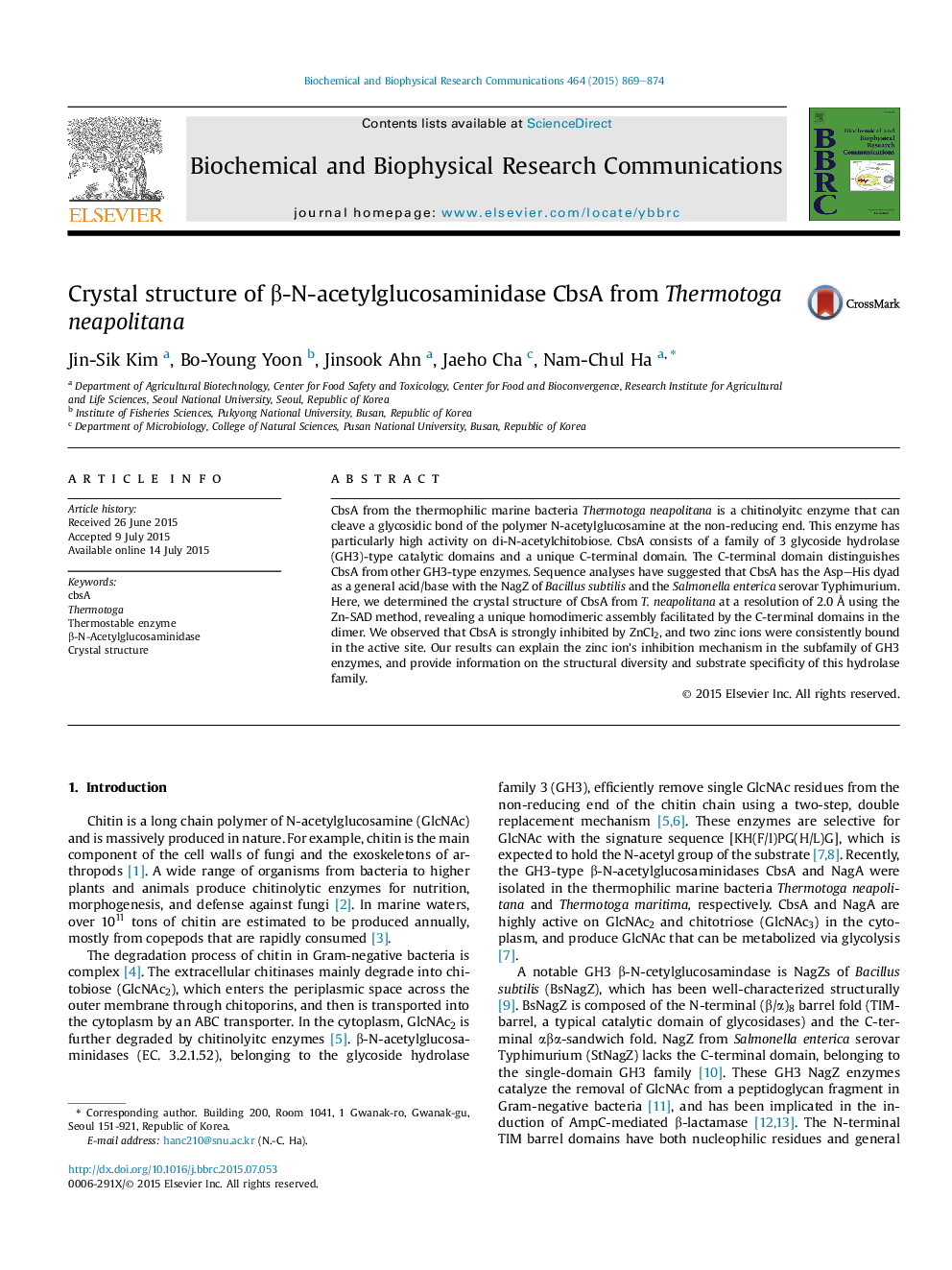| Article ID | Journal | Published Year | Pages | File Type |
|---|---|---|---|---|
| 10750493 | Biochemical and Biophysical Research Communications | 2015 | 6 Pages |
Abstract
CbsA from the thermophilic marine bacteria Thermotoga neapolitana is a chitinolyitc enzyme that can cleave a glycosidic bond of the polymer N-acetylglucosamine at the non-reducing end. This enzyme has particularly high activity on di-N-acetylchitobiose. CbsA consists of a family of 3 glycoside hydrolase (GH3)-type catalytic domains and a unique C-terminal domain. The C-terminal domain distinguishes CbsA from other GH3-type enzymes. Sequence analyses have suggested that CbsA has the Asp-His dyad as a general acid/base with the NagZ of Bacillus subtilis and the Salmonella enterica serovar Typhimurium. Here, we determined the crystal structure of CbsA from T. neapolitana at a resolution of 2.0 Ã
using the Zn-SAD method, revealing a unique homodimeric assembly facilitated by the C-terminal domains in the dimer. We observed that CbsA is strongly inhibited by ZnCl2, and two zinc ions were consistently bound in the active site. Our results can explain the zinc ion's inhibition mechanism in the subfamily of GH3 enzymes, and provide information on the structural diversity and substrate specificity of this hydrolase family.
Related Topics
Life Sciences
Biochemistry, Genetics and Molecular Biology
Biochemistry
Authors
Jin-Sik Kim, Bo-Young Yoon, Jinsook Ahn, Jaeho Cha, Nam-Chul Ha,
